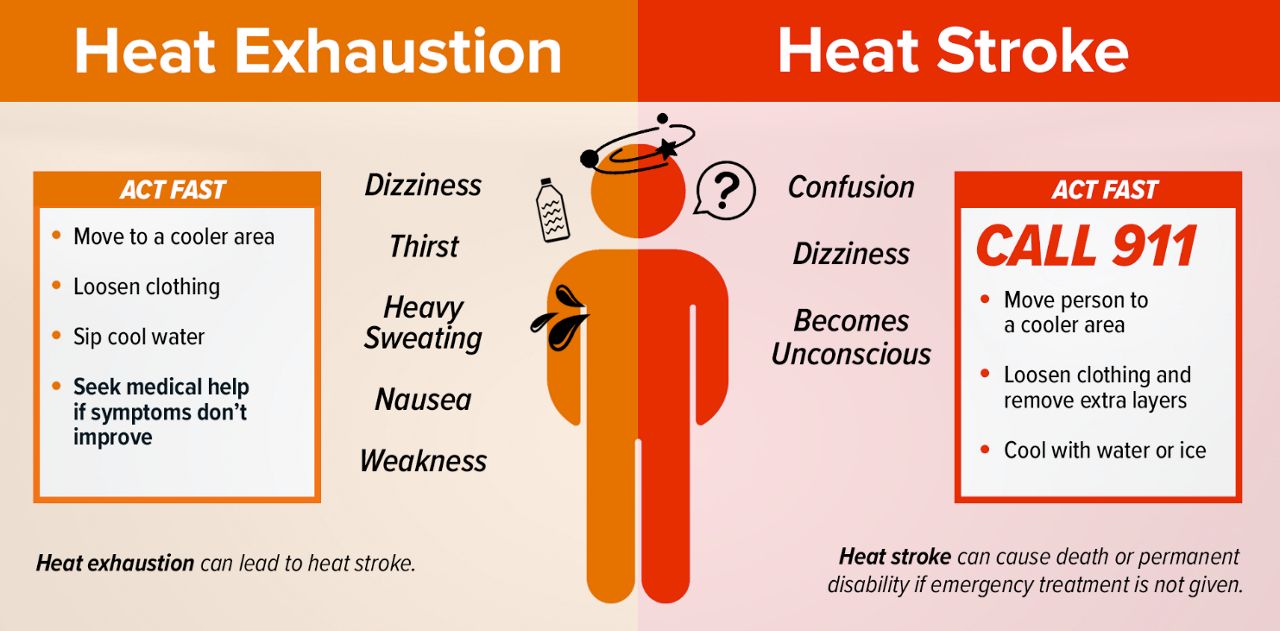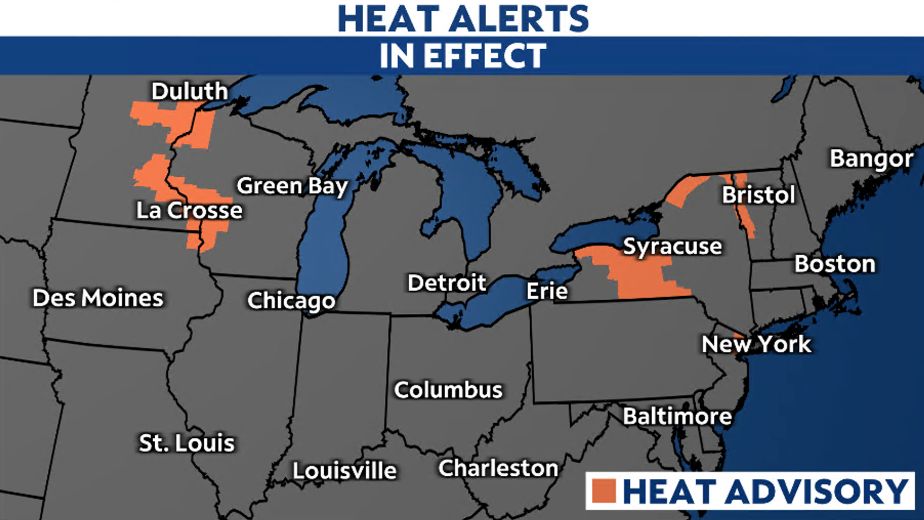Even though Sept. 1 marked the start of meteorological fall, temperatures will say otherwise as record-breaking heat scorches the eastern two-thirds of the country this week.
A heat dome responsible for pushing temperatures well above average across the Plains and Mississippi River Valley will continue to expand its reach this week.
Along with the Upper Midwest, parts of the eastern U.S. will come out of the Labor Day weekend seeing record-breaking temperatures, as well. As many as 100 record highs could be tied or broken through the next several days.
Heat Advisories are in effect around the Minnesota-Wisconsin border through Tuesday evening, with parts of Upstate New York, Vermont and the northeastern corner of New Jersey under an advisory at least until Monday evening.
A large part of the nation’s population will still feel uncomfortably hot and humid over the next few days.
The Upper Midwest
Temperatures already broke records across parts of the Upper Midwest on Sunday, where highs reached into the upper 90s and even into the triple digits across parts of Wisconsin and Minnesota.
According to the National Weather Service, the cities of Eau Claire, La Crosse and Madison in Wisconsin all saw recording-breaking highs on Sunday climb to 100, 99 and 94 degrees, respectively.
The high heat will carry on through the Labor Day holiday on Monday, and will last through Tuesday before a cold front brings much-needed relief midweek.
The next two days could see highs tie or break records again, with heat indices ranging between 95 to 105 degrees.
JD Rudd, chief meteorologist for Spectrum News 1 in Wisconsin, says that “[Monday] could end up as the hottest Labor Day on record in most of our major reporting sites.”
Rudd believes parts of the Badger State will still see near or new record highs again on Tuesday, but not as many as Sunday or Monday.
Heat spreads farther east
While not to the same extent as the Upper Midwest, much of the Northeast saw a bump up in temperatures on Sunday. And Labor Day Monday will feel noticeably hotter and more humid as the heat spreads farther east.
Highs will soar into record territory for some, climbing well into the 80s and even into the lower 90s for some spots over the next several days. That is about 10 to 15 degrees above average for this time of year.
With the humidity factored in, though, it will feel a little hotter. Heat index values are expected to rise well into the 90s.
With the potential to see temperatures hit 90 degrees (or more) Monday through Thursday, places like New York City could even encounter their first official heat wave of the season. The last heat wave recorded in Central Park was back in August 2022.
However, the city that never sleeps has seen temperatures reach 90 degrees or better for three or more consecutive days in September before. The last time that happened was back in 2015.
The rest of Upstate New York and New England will also become toasty over the next three to five days, and highs well into the 80s could extend as far as northern Maine.
Even the Carolinas will see a surge in temperatures, too, with daytime highs soaring into the mid and upper 90s and heat index values rising into the 100s by midweek.
A cold front will move through the region later this week, which will not only increasing the chance for more showers and storms, but will also take down temperatures by this weekend.
Safety first
The combo of hot temperatures and high humidity will increase the threat of heat-related illnesses, such as heat exhaustion and heat stroke.

(National Weather Service)
To stay safe, keep hydrated, avoid strenuous outdoor activities and stay in air-conditioned rooms or shaded areas during the peak heating hours of the day. Dressing in light, loose-fitting clothes will also help keep your body core temperature regulated.
In addition, keep a close eye on children, pets and older adults in the days ahead.
Turn on weather notifications to receive the latest weather updates in your area.
Our team of meteorologists dives deep into the science of weather and breaks down timely weather data and information. To view more weather and climate stories, check out our weather blogs section.

